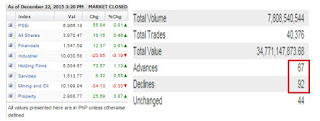Baptism of fire it has been for the opening sessions of several key stock markets in 2016.
Unfortunately, instead of fireworks to celebrate 2016, Chinese stock markets greeted the New Year with a shocking 7% crash that prompted for a trading halt!
The Bloomberg reports:
China halted trading in stocks, futures and options after a selloff triggered circuit breakers designed to limit swings in one of the world’s most volatile equity markets.Trading was halted at about 1:34 p.m. local time on Monday after the CSI 300 Index dropped 7 percent, according to data compiled by Bloomberg. An earlier 15-minute halt at the 5 percent level failed to stop the retreat, with shares extending losses as soon as the market re-opened. The selloff, the worst-ever start to a year for Chinese shares, came on the first day the circuit breakers took effect.The $7.1 trillion stock market is starting the year on a down note after data showed manufacturing contracted for a fifth straight month and investors anticipated the end of a ban on share sales by major stakeholders. Chinese policy makers, who went to unprecedented lengths to prop up stock prices during a summer rout, are trying to prevent financial-market volatility from weighing on economy set to grow at its weakest annual pace since 1990.
Perhaps policymakers were still in vacation. So when the cat is away the mouse will play.
More...
Under the circuit breaker rules finalized last month, a move of 5 percent in the CSI 300 triggers a 15-minute halt for stocks, options and index futures, while a move of 7 percent closes the market for the rest of the day. The CSI 300, comprised of large-capitalization companies listed in Shanghai and Shenzhen, fell as much as 7.02 percent before trading was suspended.Chinese shares listed in Hong Kong, where there is no circuit breaker, extended losses after the halt on mainland exchanges. The Hang Seng China Enterprises Index retreated 4.1 percent at 2:12 p.m. local time.
Absent in the above report has been the developments in today's offshore yuan (USD-CNH). The CNH which has apparently fallen by a substantial amount...(or the USD has risen significantly)
This in contrast to the more tightly government controlled onshore Yuan (USD CNY) which likewise surged at the pm session
With the CNH falling more than the CNY, this has brought about a wider gap between the two. It really signs of strains being ventilated on the currency markets, which partly emanates from outflows (capital flight) and mostly from deflationary pressures within China. And strains in the currency market seem to have spilled over to stocks.
This also shows that no matter how the Chinese government tries to facelift its financial markets, pressures from imbalances will emerge elsewhere
Woes in China's stocks appears to have spread to Japan's Nikkei 225 which tanked by 3% today.
And as of this writing US futures based on CNN data have likewise been significantly down.
Have these been writing on the wall for 2016 (not limited to financial markets but to real economies as well)?































